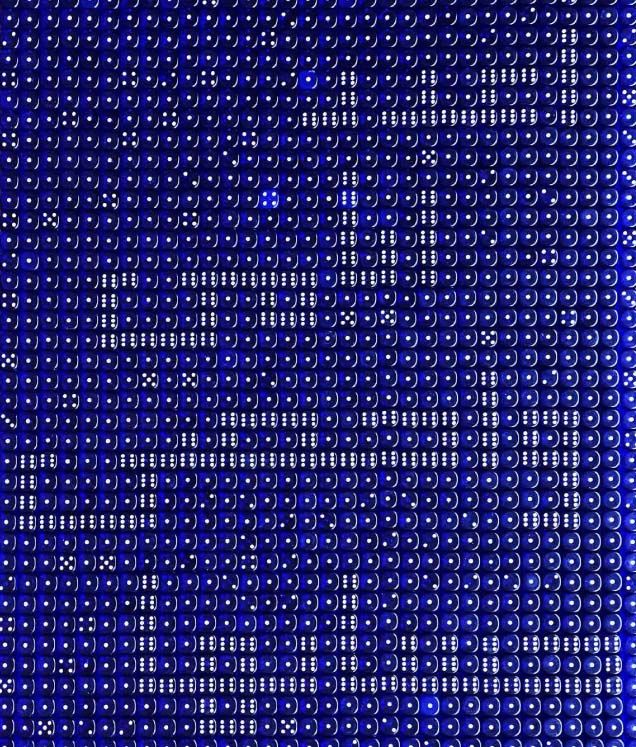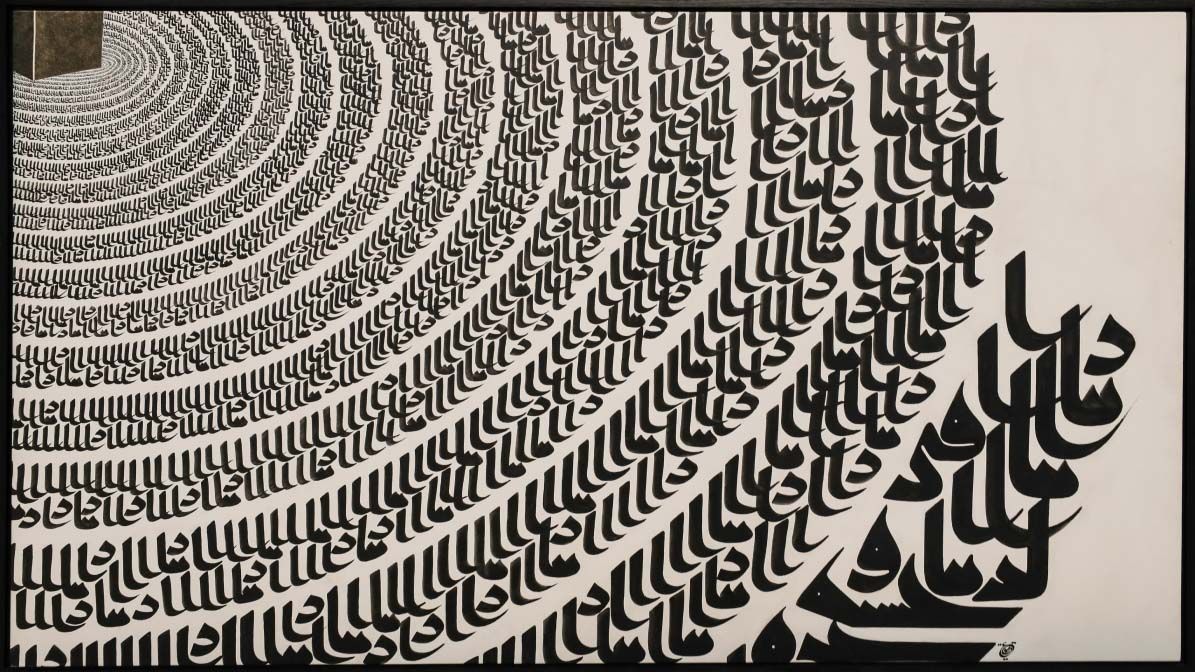Cultural Calculations
‘Imagined Maps: In search of the lost Arabian City of the Sands…’ by Sheikha Alyazia bint Nahyan Al Nahyan.
In this year, measurements became critical, such as counting the space of “safe” social distancing. The advised space can be in meters: 1.829 or can be about six feet, or the reach of one cartwheel, all will do. At the start of most things, is the number one. If we are to understand amounts in relation to the number ‘1’ then they can be understood as an accumulation. Figures are related to other figures. If I ask you to define yourself, there is bound to be some number there, whether it is age, number of years of experience, and so on.

‘Imagined Maps: In search of the lost Arabian City of the Sands…’ by Sheikha Alyazia bint Nahyan Al Nahyan.
There are numbers everywhere. For instance, there are alternate ways of measuring space and time. “To perceive the count of years and their calculations” is a verse in the Holy Qur’an, and it centers on the question of time and counting it; implying there are many ways we can measure time and understand it. It could be calendar years, or it could be solar or lunar months, hours and milliseconds.
Besides its many ways, our perception of time has a cultural bias, where perhaps a lunch break in a Mediterranean culture is understood as a ritual that will take at least an hour, if not two or three. To comprehend what is countable and what is not, is to separate the personal and the generic. Personal emotions can’t be “counted” by digits, but laws of space and time are governed by numbers.
An early oil painting of mine is the ‘Watermelon Clock,’ where the numbers 12, 3, 6, and 9 are formed by watermelon seeds, the knives are the hands, which disconnect to halt time. However enticing the notion of stopping time is, the reality is otherwise; time is movable, the past and the present shift the future and our place in it. Movement and distance are also determined by numbers. Another work of mine, exhibited in New York in 2017 ‘Carrom on the Move,’ is the route to my father and mother’s house; it is countable in six kilometers or as I know it to be, seven minutes.
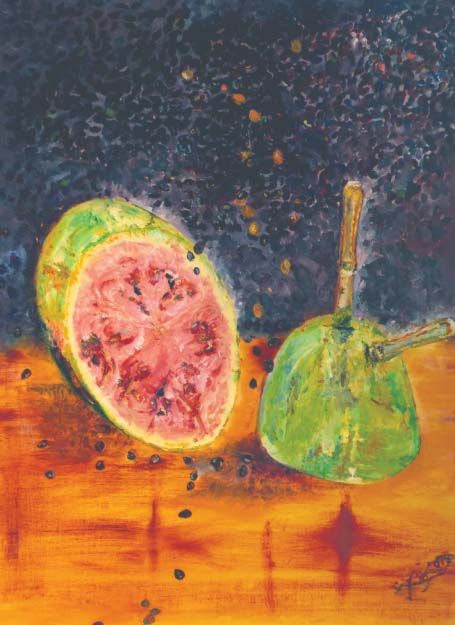
At the center of all travel routes and exploration is accurate numeration. Baghdad and Granada were the Arab capitals that boasted many celebrated travelers. One such traveler was Ibn Jubayr (1145-1217). He was educated in arithmetic, Qur’an studies and history, and set sail from Granada on one of his many famed journeys that included pilgrimage to Makkah.
In his detailed sketching (in 1185 AD) of cities and people, he wrote: “this island” Sicily… “is the length of seven days.” Time was used as a description, as it is used today with modern day flight plans. Trips range from a 30-minute flight to a 14-hour long haul.

‘Imagined Maps: In search of the lost Arabian City of the Sands…’ by Sheikha Alyazia bint Nahyan Al Nahyan.
A pair of works that I exhibited some years ago, illustrated artifacts. In contrast to the traditional depiction of the year of specific artworks, only dates of those ancient artifacts are clearly depicted in liquified paint. Recently in Pi Artworks, London, the topic of history and measurement were illustrated through the mishmash treasure map series I created. Works gave three imagined routes of the ‘lost Arabian City’ of the sands, known as Qidan, Ubar, Iram or Ad. In the early twentieth century there was an international interest to explore and track trails leading to the X mark on a map. Under the marble is an unusual coin, it shows how drawing routes is not the same as finding treasure spots. Those calculations are artistic, beyond numbers.
Perfected another kind of art, the art of globetrotting, by utilizing numerals to draw remarkable descriptions. The light house of Alexandria was such a marvel, “it could be seen from as far as 70 miles,” he wrote. Experiencing a one of a kind wonder is worth the hardship of any voyage, because there is nothing like it anywhere, there is only “1.” The uniqueness of the number 1, represents, in some ways, the meaning of art. Art is supposed to be exclusive, and works that have the most value are those “one of a kind” pieces. The ancient South Arabians, oddly, repeated in their writings, the vertical line of 1 to record years. There was no numeric symbol except the same vertical line. To represent larger amounts, zero and five, those were spelled out by letters.
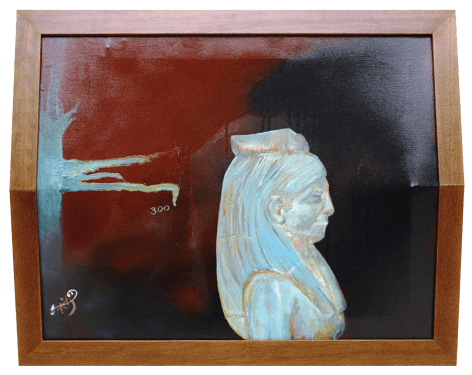
The number one is a reoccurring symbol. As in the poetry of the philosopher, Al Suhrawardi; (who was a contemporary of Ibn Jubayr): “The morning and its birds, have emerged, For the world is this one day, replicated.” The Andalusians of Cordoba, applied geometric expertise into artistic works, producing their own brand of Islamic arches. The duo horse shoe arch is a complex calculative formula. The visual reward is a pair of arches, held up by a stand-alone column. The mid-column is the one element centering the whole feature. In a Hadith by the Prophet (pbuh): “Allah is one. Favor is for the singular.” Oneness is a unified single belief, to be unsituated with another belief.
As we go about our day, an intermix of news, statistics, and opinions are presented. Though we are facing one and the same virus, our personal experiences differ, the only doable option is to be one in belief. So when we produce various works and project a belief of hope and trust, the works share one message. Moving through the social media accounts of artists in the Gulf, we see how much they create. Artists are filling gaps of uncertainty with creations, not giving space for any negative interferences to hold back movement and continuation of cultural accomplishments across our gulf nations.
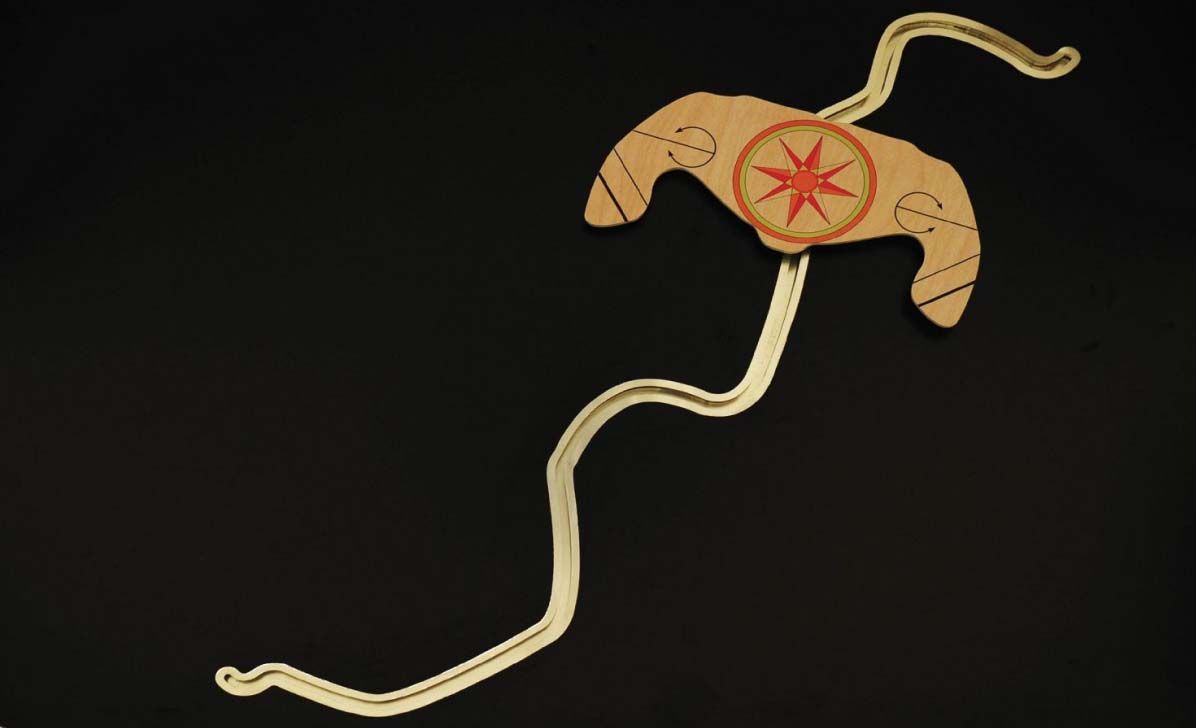
Words by Sheikha Alyazia bint Nahyan Al-Nahyan, an Emirati artist and the founder of Anasy Media specializing in documentaries and short films. She holds a regular cultural majlis called “Discussion Hour” with a special theme discussed each time.

